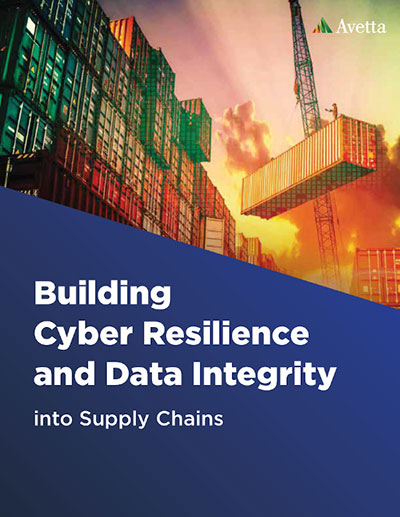The Importance of Qualifying Individual Contracted Workers

Managing risk should be a priority for any supply chain, and that means prequalifying contractors, suppliers, and vendors.
Most prequalifying happens at the company level, which leaves blind spots when it comes to the individuals working for the contracted company.
Are the individual employees qualified to perform the job? Have they been properly trained? Not knowing the answers to these questions can put the supply chain at risk of a disruption, but how can that outcome be avoided?
Most organizations will simply trust that the contractor will send the right people to do the job. While this is the easiest route, it doesn’t do much when it comes to fully managing supply chain risk.
To do that, vetting must be conducted down to the employee level. This means knowing that individuals meet the requirements for specific localities and have the proper licenses and certifications to perform the work. It also means knowing that the worker is properly trained for the specifics of the job site and that they have retained the training.
Why Prequalifying Contractors is Important and Why It’s Challenging
The most obvious benefit to prequalifying contractors is reduced risk and increased safety. Not only are certified and trained individuals less likely to cause a safety incident for themselves, but they pose less of a danger for internal employees. Prequalified contractors also produce better work, which results in a higher return on investment and fewer delays.
Prequalifying down to the employee level is not without its challenges. The first obstacle is the amount of effort it takes to track qualifications and training requirements for each role and location. Second is the administrative burden of collecting and verifying certifications.
Imagine having to track contracted workers’ compliance activities, like completion of specific training, on an ongoing basis. The amount of time spent performing background checks and staying on top of continuing compliance actions could delay work. Finally, induction training takes time and there is no guarantee that the contracted worker retained any of the knowledge.
Streamlining the Prequalifying Process
Vetting contracted workers doesn’t have to be a pain point when combined with modern technology and cloud services. Here are three ways technology enables you to properly manage risk without compromising productivity:
-
Use cloud technology for easy sharing across your organization
Tracking employee requirements and compliance by role and location produces a lot of information that needs to be shared across your organization. You might have collected the required employee information at headquarters, but the field manger needs that information at the work site. Whether it’s Google Sheets or a third-party platform, a cloud-based system makes employee information accessible to the people who need it and helps to avoid duplicating tracking efforts for both internal and contracted employees.
-
Use a document management system for licenses and certifications
Few things will frustrate your contracted workers more than having to prove their compliance multiple times. A document management system enables contracted workers to upload necessary documents, like licenses and certifications, over the internet. Storing all documents in a central location makes it easy to access them at multiple sites without duplicating efforts.
-
Invest in a learning management system (LMS) to train contracted workers
An LMS provides a practical way to ensure that contracted workers complete necessary induction training before arriving on the site. Requiring a passing score on an assessment test will help prove that the worker has retained the training knowledge before beginning work. This not only ensures contracted workers are properly trained on the details of your site, it allows them to start working sooner.
Recently, a refinery blaze in Baton Rouge, La., injured several workers during maintenance activities. The Chemical Safety Board (CSB) conducted an investigation and found that certain company practices were at fault, stating:
“Our investigation found that these accepted practices were conducted without appropriate safety hazard analysis, needlessly injuring these workers. It is important to remember that good safety practices are good maintenance practices and good business practices.”
One of the recommendations was to provide training to ensure that workers perform their tasks safely. This advice is doubly important for contractors that are new to the job site.
Knowing who your supply chain partners are is integral to reducing risk. Avetta gives you insight into potential suppliers, vendors, and contractors, ensuring that they are both qualified and certified to do the job before you begin working with them.
Trusting that your partners can perform their contracted duties is good; knowing that they can is better.
Related White Papers
Avetta's Auditing Service Accelerates Screening Process for Qualified Contractors
Vertical Limit utilized Avetta's auditing service to minimize supply chain risk with detailed visibility into how their contractors perform critical safety procedures. Download Now!
4 Steps for Suppliers to Stand Out Via Safety Programs
By differentiating your firm via strong, systematic safety programs, you'll have a better chance of attracting potential employers on top of reducing your overall supply chain risk. Download Now!
Article Topics
Avetta News & Resources
Compliance Risk: A Significant Impediment to the Modern Supply Chain Protecting Supply Chains Against Economic Uncertainty Supplier Classification: A Differentiator in the Modern Supply Chain Landscape New Cybersecurity Requirements Needed for Supply Chains Building End-to-End Risk Resiliency in Supply Chains Supply Chain 2030: Evolving Challenges, Opportunities and Technological Possibilities Extending ESG Best Practices Into the Supply Chain More AvettaLatest in Supply Chain
Amazon Logistics’ Growth Shakes Up Shipping Industry in 2023 Spotlight Startup: Cart.com Walmart and Swisslog Expand Partnership with New Texas Facility Nissan Channels Tesla With Its Latest Manufacturing Process Taking Stock of Today’s Robotics Market and What the Future Holds U.S. Manufacturing Gains Momentum After Another Strong Month Biden Gives Samsung $6.4 Billion For Texas Semiconductor Plants More Supply Chain















